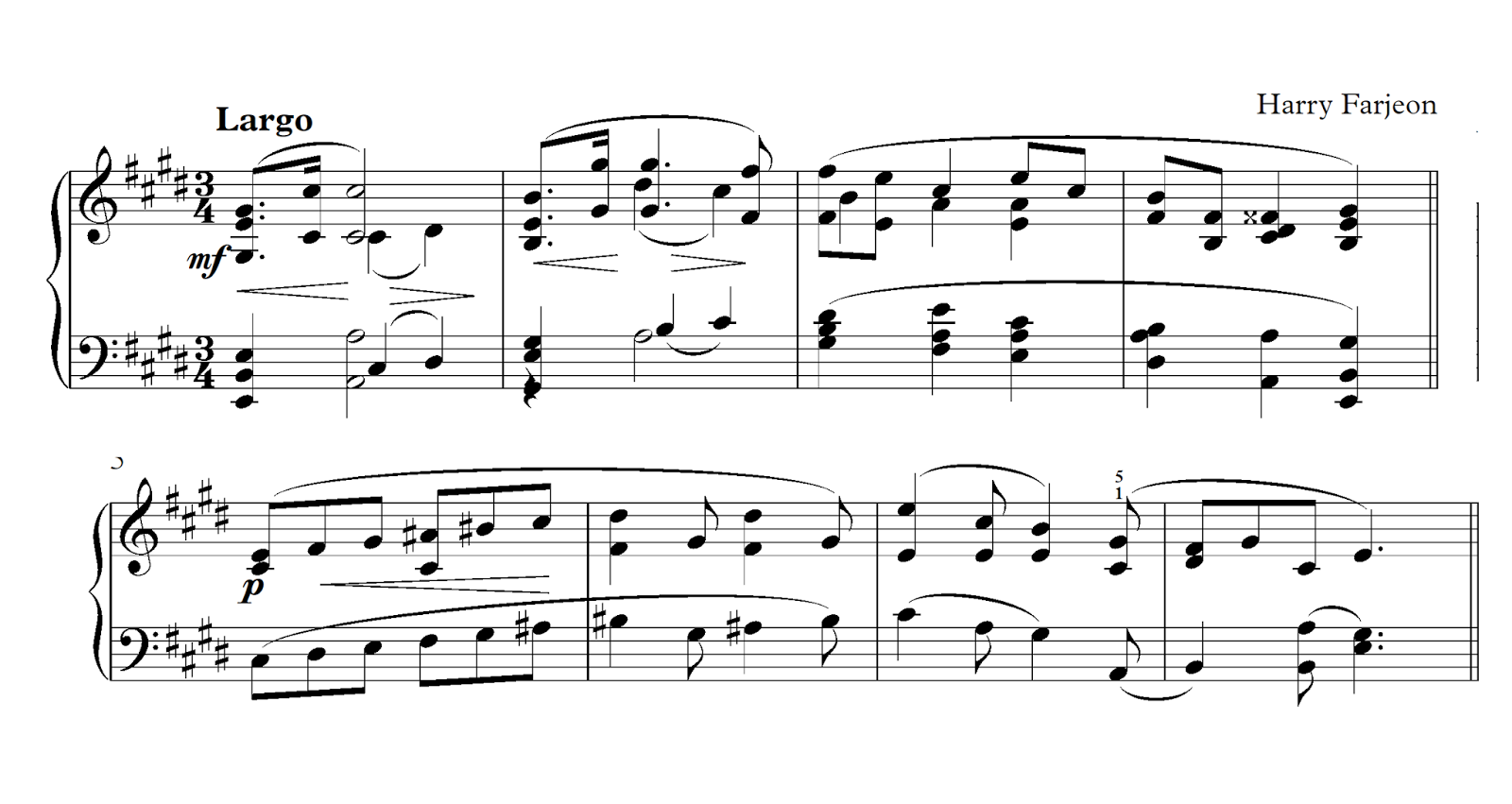E MAJOR: 4 SHARPS
The new sharp is D sharp. Take a
good look at it. Is it any worse than the others? Is it any blacker, or any
bigger? “No,” says Somebody; “not that, but I call it E flat.”
Ah, but you mustn’t, Miss
Somebody, when you meet it in the sharp keys. You don’t want a scale like this:
Scales and Arpeggios
Example 1. About this scale you will notice
that it does not begin on the first beat of the bar. You should learn to play
your scales in all manner of ways, as you will have to play them in your pieces
– not just in the same old way, probably arrived at by chance and not thought
about at all. Different times, different accents, different louds and softs,
different cresces
and dims.
and different kinds of tone quality.
Remember, you are not supposed to
play each scale only in the key in which I present it. Every scale should be
dressed out in as many keys as you can manage – every scale and every passage,
too; transposition is one of the chief qualities of good musicianship, and the
more keys a scale, or anything else, can dress up in, the more use it will be
in the world.
The chords at the end of Example
1 are the principle chords in the key. It used to be a good custom of the good
old times to finish up every scale in this good old way, and a jolly good old
thing, too! It helps one get used to the bones of a key. A useful variation is
to play F sharp in the Treble of the first chord instead of E. If you can bring off these two varieties
successfully in all the keys you know, and later in all the keys you are going
to know, you can face the world with a calm heart and a contented mind.
Example 2. This is just arpeggios of the same
three chords. Again you can substitute F sharp for E in the chord of A. This
turns it from the Root Position of the Subdominant into the First Inversion of
the Supertonic, and it is well to remember that these two chords lead up naturally
to Cadence points – being, indeed, good before all Cadences except the Plagal.
Example 3. This is set to make you
concentrate upon the black keys. You will see that these are all given together
alternately with all the white ones. This exercise is not to be transposed, as
the special notes pointed out have no particular significance in other keys. By
the way, all the exercises should be played four times over, without stopping.
A single run through will not impress them on your memory.
Example 4. This consists of scale passages
built upon the three chief chords of the key. By now you should be growing
familiar with these chords. :-)
C SHARP MINOR
Example 5. Now we come to C sharp minor.
Begin by transposing Ex. 1 into this key, playing the scale in two ways
(Harmonic and Melodic Minor) but the chords in one way only (Harmonic). Then
tackle Ex. 4, and “realize” by hard thinking, the same three Primary Triads on
which it is formed.
Example 6. This is a little nearer to being a “piece.” It begins in E major, modulates
to C sharp minor, and comes back again.
Example 7. Bigger chords and more varied
harmony, for larger hands and wider experience. The only chromatic note I have
used at all comes in this example.
Having played all these four
times over, and having repeated this task three times during the day for shall
we say a fortnight? – you will begin to dream of E Major, or better still, you
will consider it so ordinary that it will not be worth dreaming about :-D









No comments:
Post a Comment